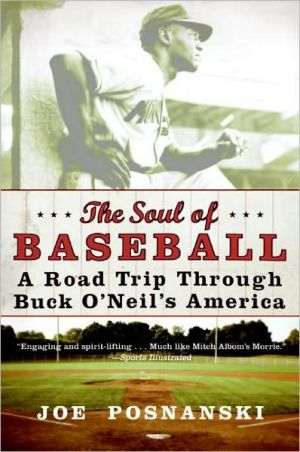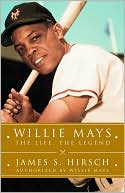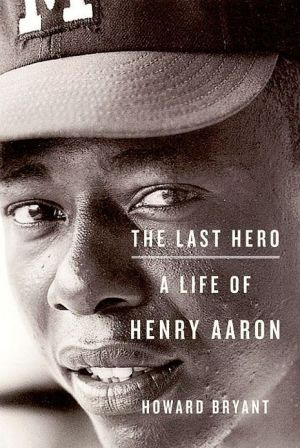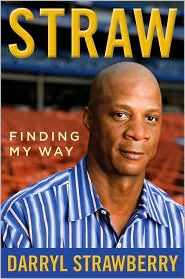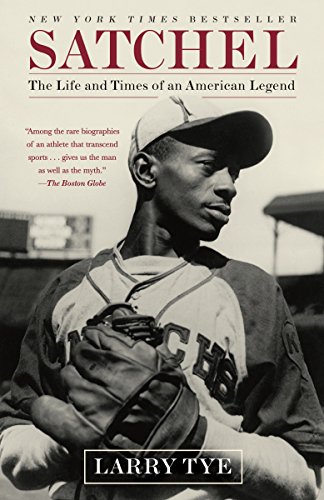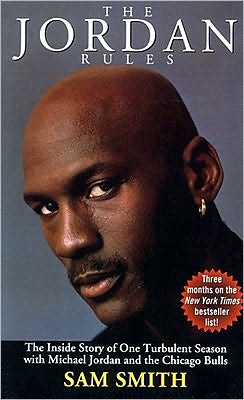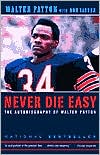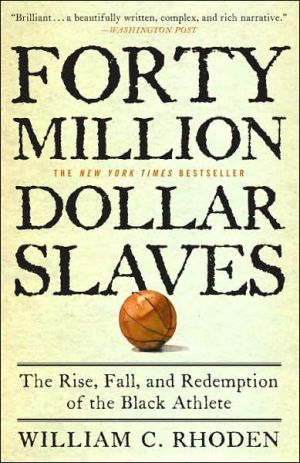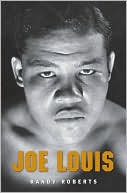Soul of Baseball: A Road Trip through Buck O'Neil's America
When legendary Negro League player Buck O'Neil asked Joe Posnanski how he fell in love with baseball, the renowned sports columnist was inspired by the question. He decided to spend the 2005 baseball season touring the country with the ninety-four-year-old O'Neil in hopes of rediscovering the love that first drew them to the game.\ The Soul of Baseball is as much the story of Buck O'Neil as it is the story of baseball. Driven by a relentless optimism and his two great passions—for America's...
Search in google:
When legendary Negro League player Buck O'Neil asked Joe Posnanski how he fell in love with baseball, the renowned sports columnist was inspired by the question. He decided to spend the 2005 baseball season touring the country with the ninety-four-year-old O'Neil in hopes of rediscovering the love that first drew them to the game. The Soul of Baseball is as much the story of Buck O'Neil as it is the story of baseball. Driven by a relentless optimism and his two great passions—for America's pastime and for jazz, America's music—O'Neil played solely for love. In an era when greedy, steroid-enhanced athletes have come to characterize professional ball, Posnanski offers a salve for the damaged spirit: the uplifting life lessons of a truly extraordinary man who never missed an opportunity to enjoy and love life.Publishers WeeklyPosnanski, sports columnist for the Kansas City Star, spent a year on the road with the iconic Negro Leagues player and manager Buck O'Neil (1911-2006), recording the magnanimous 94-year-old's encounters with scores of fans and his vast repertoire of entertaining stories. O'Neil, the first African-American to coach in the Major Leagues, was a tireless spokesman for the Negro Leagues Baseball Museum in Kansas City. Posnanski is at his best when recounting O'Neil's baseball memories of the likes of legends Satchel Paige, Willie Mays and Josh Gibson. The author captures O'Neil's rhythmic voice and often relays it in italicized verse, while painting an uplifting portrait of a man who was without bitterness despite long experience with racial discrimination. Too often, however, Posnanski bogs down in mundane details that read like a travelogue of airports and tardy drivers. Many of the chapters have the feel of lengthy newspaper articles stitched together, lacking segues and narrative. Nevertheless, the final scenes are moving tales of the funeral of 103-year-old Ted "Double Duty" Radcliffe and O'Neil's dignity when he was infamously passed over by the National Baseball Hall of Fame and Museum in Cooperstown. (Apr.)Copyright 2007 Reed Business Information
Chapter One \ \ \ Warming Up a Riff\ We were in Houston in springtime. We sat in a ballpark under a sun so hot the seats melted beneath us. There is something honest about Houston heat—it comes at you straight. It does not drain you like the Washington humidity or try and trick you like dry heat in Phoenix. In Houston, the heat punches you in the gut again and again. Buck O'Neil was wilting.\ "I'm ready to go back to the hotel whenever you are," Buck said to no one in particular, but mostly to me. We were at a ballgame. The baseball season had just begun. Before our road trip ended, Buck and I would go to many ballgames together. We would spend a full year, winter through winter, rushing to Buck's next appearance, ballpark to hotel to autograph session to school to hotel to museum and back to ballpark—thirty thousand air miles and another few thousand more on the ground. We traveled around America. Buck talked about baseball.\ In time, I would grow accustomed to Buck's moods, his habits, his style, the way he wore his hat, the way he sipped his tea, the way he walked and talked, and the way he dressed. Buck splashed color. He wore bright crayon shades: royal purple, robin's-egg blue, olive green, midnight blue, and lemon yellow. He wore pinstripe white suits, orange on orange, and shoes that perfectly matched the color of his pants. He never wore gray.\ In time, I would grow accustomed to Buck's boundless joy. That joy went with him everywhere. Every day, Buck hugged strangers, invented nicknames, told jokes, and shared stories. He sang out loud and danced happily. He threw baseballs to kids and asked adults to tell him about their parents, and he kept signing autographs long after his hand started to shake. I heard him leave an inspiring and heartfelt two-minute phone message for a person he had never met. I saw him take a child by the hand during a class, another child grabbed her hand, and another child grabbed his, until a human chain had formed, and together they curled and coiled between the desks of the classroom, a Chinese dragon dance, and they all laughed happily. I saw Buck pose for a thousand photographs with a thousand different people, and it never bothered him when the amateur photographer fumbled around, trying all at once to focus an automatic camera, frame the shot like Scorsese, and make the camera's flash pop at two on a sunny afternoon. Buck kept his arm wrapped tight around the women standing next to him.\ "Take your time," he always said. "I like this." Always.\ "Man, it's hot in Houston," Buck said, and he launched into a story about one of his protégés, Ernie Banks, the most popular baseball player ever to take Wrigley Field on the North Side of Chicago. Banks played baseball with unbridled joy. They called him "Mr. Cub." Funny thing, when Banks first signed with the Kansas City Monarchs—Banks was nineteen then, it was 1950—he was a shy kid from Texas. He sat in the back of the team bus and hardly spoke—"Shy beyond words," Buck called him. Buck was the manager of that Monarchs team, and he would say to Banks, as he said to all his players, "Be alive, man! You gotta love this game to play it."\ Ernie Banks embraced those words. He opened up. His personality emerged. "I loved the game more," he would say. Then he was drafted into the army. When Banks joined the Chicago Cubs three years later, he had become a new man. He ran the bases hard, he swung the bat with force, he banged long home runs, he dove in the dirt for ground balls. He smiled. He waved. He chattered. He played the game ecstatically. He was the first black man to play baseball for the Chicago Cubs, but his joy transcended color. In the daylight at Wrigley Field, Ernie's joy brought him close to all the shirtless Chicago men who drank beer in the bleachers behind the ivy-covered walls. Ernie's joy brought him close to the men and women who came to the ballgame to get away from the humdrum of daily life. Ernie's joy brought him close to all the fathers and sons in the stands who dreamed of playing big-league ball. They dreamed of playing ball like Ernie Banks.\ "I learned how to play the game from Buck O'Neil," Banks would say. Buck said no, Ernie Banks knew how to play, but what he did learn was how to play the game with love. Banks began each baseball game by running up the dugout stairs, taking them two at a time. He then breathed in the humidity, scraped his cleats in the dirt, and shouted what would become his mantra: "It's a beautiful day for a ballgame. Let's play two."\ Buck remembered a July game Banks played in Houston. That was 1962 at old Colt Stadium. Buck O'Neil was a coach for the Cubs then, the first black coach in the Major Leagues. That Houston sun beat down hard on an afternoon doubleheader. Buck watched Banks run up the dugout steps, two at a time, he breathed in the humidity, he scraped his cleats in the dirt, and he said his bit—Beautiful day, let's play two. Ernie Banks fainted before the second game. That's Houston heat.\ Buck was ninety-three years old. People often marveled about his age. Buck never turned down an invitation to speak, and he never said no to a charity, and he often appeared at three and four events a day. And it was amazing: Buck always seemed fresh and alive and young. Only those close to him understood that it was an illusion, that he worked hard to stay young. He took catnaps on the car rides between appearances. He ate two meals a day as he had for seventy-five years. He often showed up for an event, waved to the crowd, spoke for a few minutes, and then excused himself. "Where did Buck go?" people would ask. By the time they had noticed him missing, Buck had already collapsed in his hotel bed.\ The foregoing is excerpted from The Soul of Baseball by Joe Posnanski. All rights reserved. No part of this book may be used or reproduced without written permission from HarperCollins Publishers, 10 East 53rd Street, New York, NY 10022
Warming Up a Riff 1Buck O'Neil's America 8WinterThey Can't Take That Away from Me 27Nicodemus 35SpringI Like to Recognize the Tune 55A Ballgame in Houston 62It Don't Mean a Thing (If It Ain't Got That Swing) 82Buck O'Neil Day 89SummerBlue Skies 107New York, New York 115These Foolish Things (Remind Me of You) 128Fathers and Sons 135Summertime 154Gary, Indiana 161I'd Rather Have a Memory Than a Dream 175Classrooms in Atlanta 185Isn't This a Lovely Day? 201AutumnI Got a Right to Sing the Blues 215A Funeral in Chicago 226Washington 240Winter (Take 2)Home 255Afterword 271Afterword to the Paperback Edition 275Acknowledgments 281
\ From Barnes & Noble"If I'm a Hall of Famer for you, that's all right with me." Negro League baseball star and major league coach John "Buck" O'Neil (1911-2006) took life as it came, enjoying the game he loved deep into his 90s. He was not only the scout who signed Hall of Famer Lou Brock; he was the first African American to coach in the big leagues; and at the age of 94, he actually made two plate appearances in a minor league all-star game! In The Soul of Baseball, Buck's friend Joe Posnanski recounts his trip around "baseball America" with a legendary star and a sweet man. A must for every baseball fan.\ \ \ \ \ Leigh Montville"This book is flat-out terrific...If Gandhi had played baseball, he would have been Buck O’Neill."\ \ \ Dave Barry"[A] poignant, very funny, and ultimately inspiring book."\ \ \ \ \ Bob Costas"Imagine, a year spent with Buck O’Neil...you don’t have to imagine it, it’s all here."\ \ \ \ \ Harvey Frommer"[A] loving, lyrical effort by Joe Posnanski. One of the most original and winning baseball books in recent years."\ \ \ \ \ Publishers WeeklyPosnanski, sports columnist for the Kansas City Star, spent a year on the road with the iconic Negro Leagues player and manager Buck O'Neil (1911–2006), recording the magnanimous 94-year-old's encounters with scores of fans and his vast repertoire of entertaining stories. O'Neil, the first African-American to coach in the Major Leagues, was a tireless spokesman for the Negro Leagues Baseball Museum in Kansas City. Posnanski is at his best when recounting O'Neil's baseball memories of the likes of legends Satchel Paige, Willie Mays and Josh Gibson. The author captures O'Neil's rhythmic voice and often relays it in italicized verse, while painting an uplifting portrait of a man who was without bitterness despite long experience with racial discrimination. Too often, however, Posnanski bogs down in mundane details that read like a travelogue of airports and tardy drivers. Many of the chapters have the feel of lengthy newspaper articles stitched together, lacking segues and narrative. Nevertheless, the final scenes are moving tales of the funeral of 103-year-old Ted "Double Duty" Radcliffe and O'Neil's dignity when he was infamously passed over by the National Baseball Hall of Fame and Museum in Cooperstown. (Apr.)\ Copyright 2007 Reed Business Information\ \ \ \ \ Library JournalThis is a recounting of Posnanski's (Kansas City Star) travels around America and across a baseball season with fellow Kansas City-ian and Negro League legend O'Neil, who died in 2006. O'Neil reminisces about his days in black baseball, his years as a scout, and his times with Jackie Robinson and Satchel Paige. There are also some helpings of jazz appreciation along the way. Poignantly, Posnanski describes the anticipation with which O'Neil waited to hear whether he was to be one of the Negro Leaguers retroactively inducted into the Hall of Fame in 2006. For all general baseball collections.\ \ —Bob Cottrell, Margaret Heilbrun, Paul Kaplan, Gilles Renaud Copyright 2007 Reed Business Information\ \ \ \ \ Kirkus ReviewsJournalist Posnanski (The Good Stuff, 2001) accompanies a baseball legend on a cross-country journey to raise awareness of the Negro Leagues. Buck O'Neil, who died at the age of 94 in 2006, is said to have charmed everyone he met, from schoolchildren to men old enough to remember Negro League greats like Satchel Paige and Josh Gibson. Posnanski masterfully conveys O'Neil's charisma and the rhythm of his words, which often read like free verse. The author trailed his subject as he traversed the country to rekindle interest in the talented players who pushed their way from state to state on rickety buses in an era when Major League Baseball excluded black players. O'Neil's unceasing efforts helped several Negro League stars get inducted into the Baseball Hall of Fame. Despite being a good player, manager and scout in his own right-not to mention a tireless ambassador for the game-he fell one vote shy of election, an injustice decried by his admirers. But O'Neil was not bitter. If baseball was his first love (with jazz a close second), his main occupation was living life the same way he played the game: with unabashed joy and passion. O'Neil's credo was "you don't ever walk by a red dress," and his greatest asset was not his ability to hit a fastball but his talent for establishing a connection with those he encountered. He saw goodness in the world despite having been deprived of numerous opportunities because of the color of his skin. A worthy paean to an American legend.\ \
